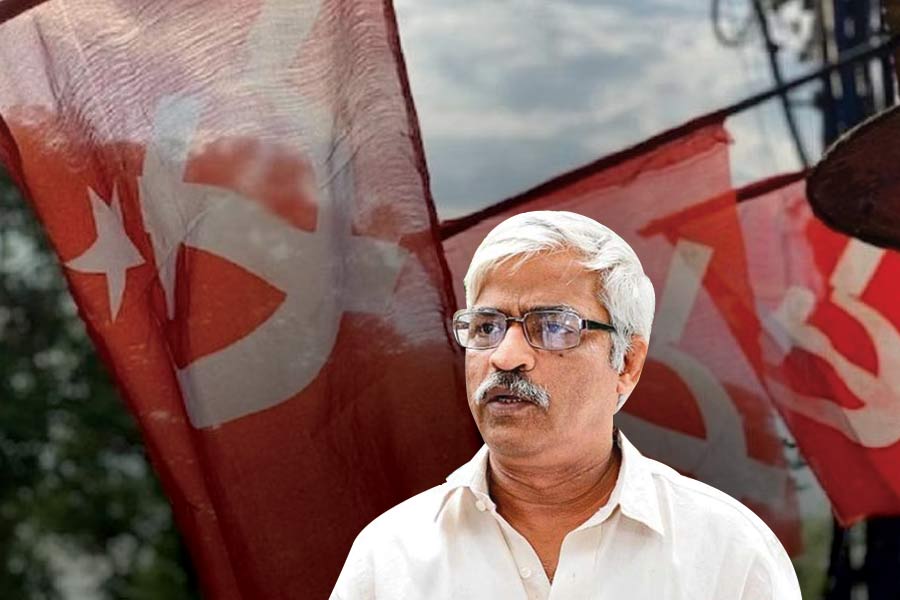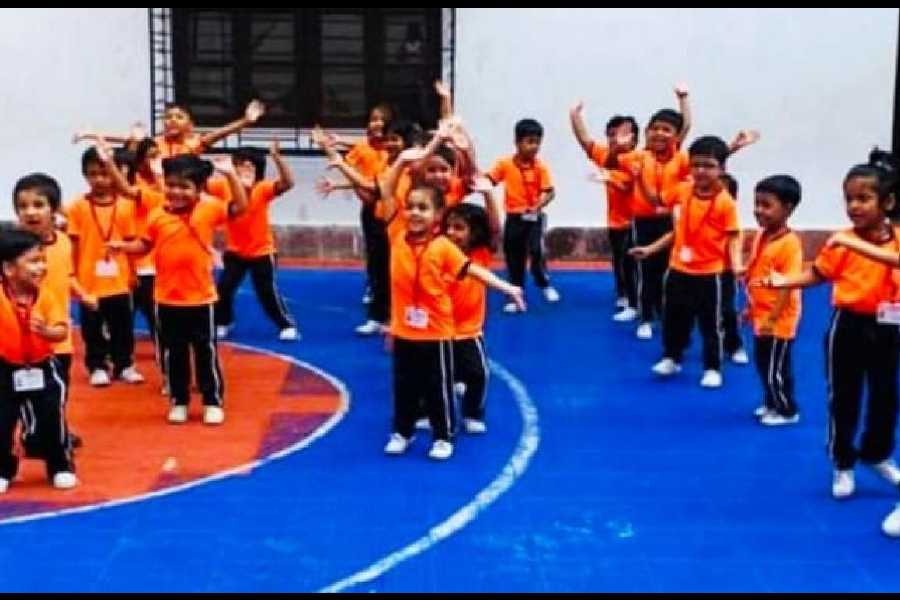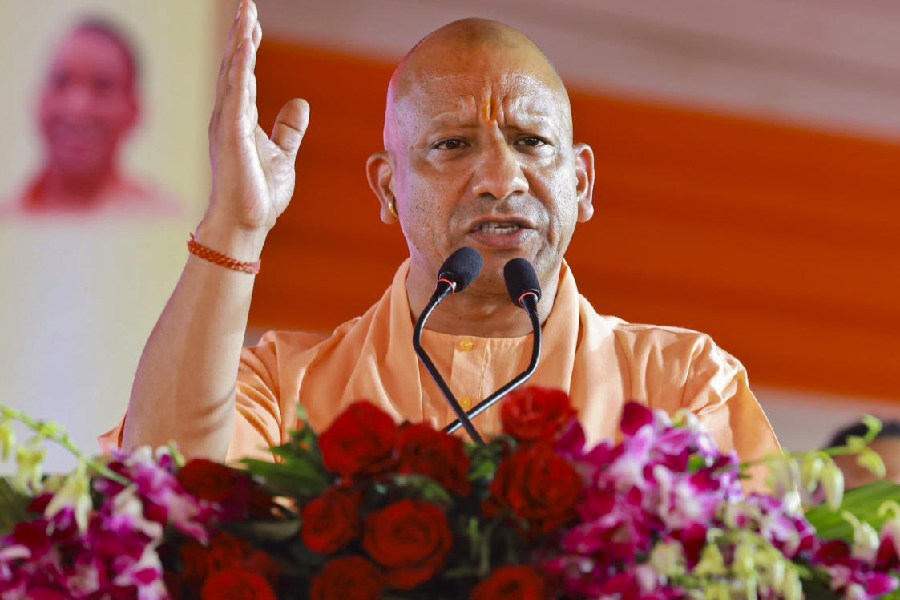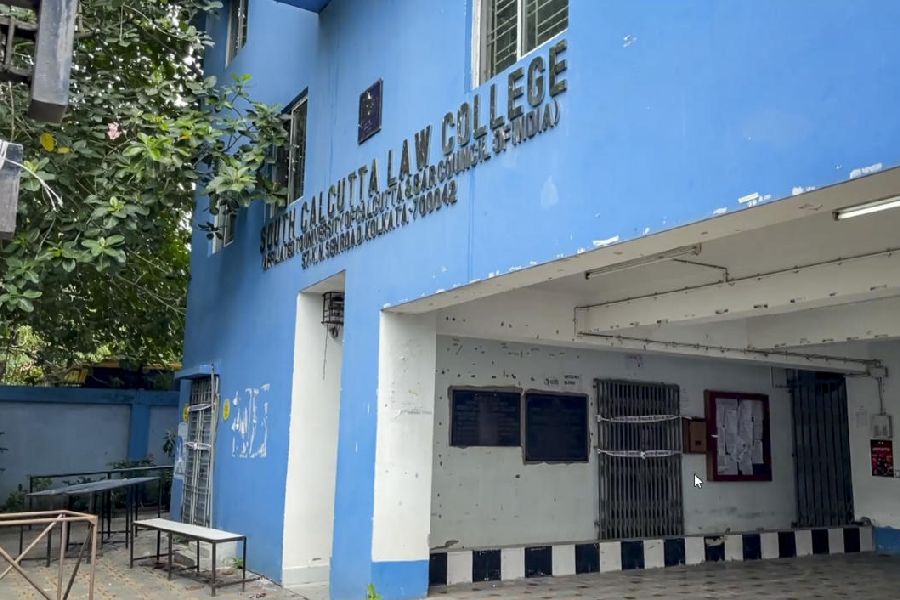|
|
| Net, set, go: Today, thanks to the Internet, the stage for the pujas is truly global |
Ensconced in the comforts of her cushy home at Hendon in London, Saraswati Pandit sits in front of the computer, scrolling enthusiastically through the website of a Calcutta-based puja portal for images of goddess Durga. “I am deeply religious, and my domiciled status in the United Kingdom has done nothing to dent my faith in God,” says the 62-year-old non-resident Indian, a cashier at a John Lewis departmental store.
It’s a typical September day in the English capital and nothing has perceptibly changed outside the walls of her residence, where life still goes on with unfailing British punctuality. Inside, however, time has gone into a warp for the expatriate, who knows exactly what it feels like to wake up to golden sunshine on an autumn morning and hear the wind blow through rustling kash phool — or foxtails. And though the dhaks haven’t started beating in sync outside her window, as they used to back home long ago, Pandit is not complaining. Thanks to the Internet, the pujas, for Pandit, are now only a click away.
Several time zones away, Sapna Banerjee, a 25-year-old second generation New Yorker, uses the Internet to soak in an experience that was never quite her own. “I have heard that people in Calcutta go from neighbourhood to neighbourhood checking out the different manifestations of Ma Durga and the elaborate decorations,” says Banerjee. She can’t always do that in New York but Banerjee has found an alternative. “All chapters that organise pujas around here are very Net savvy, and even if I can’t take a physical tour around town, I can browse through them all virtually and feel the festive spirit.”
|
Clearly, the days when probashi or expatriate Bengalis — sitting in an apartment in downtown Los Angeles or Hamburg — would mourn the distance between them and their old neighbourhood puja are history. From Toronto to Timbuktu, the jazz of the pujas is now for the taking, albeit on cyberspace.
Dozens of websites — some run by entrepreneurs in India, some by Bengalis living abroad — have come up in recent times showcasing different aspects of Durga Puja. With the puja bouquet on the Internet, you can listen to agomoni songs that celebrate the arrival of Durga, check out puja dates and schedules, get a close-up of some of the best images in and outside Calcutta — or even surprise relatives living thousands of kilometres away with a box of sweets on bijoya dashami.
Sambit Kundu, a software professional working in San Diego in California, says that he enjoys listening to the musical pre-puja odes of the Mahalaya. All Kundu has to do is log on to his favourite website, www.bangalinet.com and wait for the audiostream to load on his computer. “It is an evocative experience,” he gushes.
Then there’s Saroj Majumdar, an entrepreneur resident in Liverpool, who finds www.anandautsav.com just right for savouring the sights of the pujas back home. “It used to be difficult to get a feel of the pujas earlier, but now I can actually access almost all kinds of puja paraphernalia on the website,” he says. “There are shots of specific pujas in particular areas in Calcutta and they remind me of my childhood days.”
Needless to say, puja crazy non-resident Bengalis are having the time of their lives — for technology has ensured that the festival is no longer a fading album of old snap shops. “Technology helps them get a much clearer picture of what is going on back home,” says Delhi-based social scientist Ashis Nandy. “It reduces the chances of them wallowing in a false sense of community feeling that is likely to arise out of their not knowing exactly what the dominant mood in Bengal is like,” he observes.
There was a time when the pujas came all wrapped in nostalgia for the Bengali living outside the state. But advancing technology has succeeded in taking the pujas to a wider circle of audience. If television programmes on Doordarshan enabled Bengalis living across West Bengal to catch up with the puajs across the state in the early ’90s, satellite TV made it possible for a national audience to tune in a few years later. Now, with the Internet, the stage for the pujas is truly global.
The trend of online puja began some five years ago — but has become more and more fancy in recent times, thanks, primarily, to the spread of digital cameras. “With the Internet boom, web developers realised the puja experience could be carried to each and every home over the Net,” says Sushmita Roy of the Delhi-based Compare Infobase Ltd, the developers of www.123Durgapuja.com.
Not surprisingly, websites catering to the expatriate’s interests have proliferated. Most sites are easy to run — since they either depend on greetings and gifts or contain stock information such as the history of pujas and puja schedules.
Some, like Anandautsav — launched in 2003 — are substantially more detailed. A one-stop URL, it has news about the pujas (will it rain in Calcutta?), puja clippings, legends of Durga and lip-smacking puja recipes. There are downloads and even short animation films that take on everything from Mahisasura — thus giving the devil his due — to the Bengali’s knack of leaving home for Darjeeling during the holidays. That apart, the website has room for pujas from all over the world — organising committees from places as diverse as Paris, Hanoi, Toronto, Montreal to London and Baltimore send in photos of their own pujas, making the affair truly international.
In its wings are websites that help people send their wishes to friends and relatives. “The major demand on our website is for wallpapers of goddess Durga and cards,” says Roy. “From Mahalaya onwards, we have begun to receive at least 80-100 hits in the cards section and about 50-60 hits in the wallpaper section of our website every day. We expect the daily number of hits to go up to about 300 during the pujas.”
Most hits, say webmasters, come in from the US and the UK — but resident Indians have also begun to log in. “That’s because there are thousands of Bengalis living in Indian cities other than Calcutta who want to keep a tab on activities, whether in Calcutta or in their own cities,” says a developer.
Portals such as Bangalinet have incorporated novel features on their site such as audio clips of dhak beats. “We have a section on the history of the Durga Puja,” says Sukanta Chatterjee, CEO, Bangalinet. “For example, the fact that Durga Puja has a history that goes back to the Battle of Plassey is unknown to many.” The daily number of hits on Bangalinet is an astounding 2,500, claims Chatterjee.
Gifting is yet another activity that puja websites make possible. And those who have used online facilities to send presents in the past know just how much of a difference it can make. “The ability to send gifts at the click of a button makes it a lot easier to let people know back home that you’re thinking of them during the pujas,” says 40-year-old Gautam Chakravartee, a resident of New York.
And that’s primarily the reason why developers who have e-commerce sections dealing with puja gifts have a couple of weeks of hectic business. “We have been getting about 10-12 gift orders on our website every day,” says Pranav Sharma of the Lucknow-based website Indiagiftsportal. And the gifts are not only outbound — a lot of bookings are made from abroad to be delivered to Bengali homes across India as well. The choice of gifts varies from website to website, ranging from sweets boxes to items of home décor. “But the clear-cut favourite is the kaju barfi hamper,” says Dharmendra Jaisinghani, director of the gift portal Indiawithlove.
And while the Bengali is happy to furiously click away on the mouse, web developers say they have reason to smile too. For with the growing popularity of puja sites, the revenue has been coming in as well.
Prominent websites such as Anandautsav draw high-profile advertisers, including real estate biggies such as Bengal Peerless Housing, electronics goods companies such as Hyundai Electronics and prominent web portals such as Sulekha. For smaller sites, advertisers are dynamically generated by search engines and could be anyone from around the world.
Still, there is a flip side to all that’s fun about puja on the Net. Nandy warns that it can also foster a sense of parochialism among a few Bengalis living abroad. “The virtual link to a common home cloisters them together and makes them more inclined to keep fellow Indians such as Tamils or Gujaratis whom they would have otherwise mingled with at a distance,” he says.
Right now, though, it’s Durga Puja that rules. Thousands of finger tips are clicking away frantically in some part of the world or the other. Puja on the Net is just what the doctor ordered: you can see the best of the pujas across the world, offer a prayer, gorge on sweets and send your greetings. And you can always switch it off when the noise gets to you.











